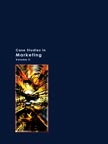Harley-Davidson: Customer-led Marketing to Revive a Cult Brand
|
ICMR HOME | Case Studies Collection
For delivery in electronic format: Rs. 500; For delivery through courier (within India): Rs. 500+ Shipping & Handling Charges extra » Marketing Case Studies 
Custom Search
Please note: |
|||||||
To attract and engage non-core customers with the brand, Harley adopted a consumer-led marketing approach called crowdsourcing7. Through crowdsourcing, Harley wanted to expand its strength as one of the most customer-centered brands in the world. Background NoteHarley was established in 1903 by William Harley and Arthur Davidson (Arthur) who built the first Harley motorcycle, a racer bike, in a small wooden shed in Milwaukee. Later Arthur's brother, Walter Davidson (Walter), joined the business. In 1906, the company built a new factory in Milwaukee and also launched its first product catalog. In 1907, William A. Davidson, brother of Arthur and Walter, joined the company. The Harley-Davidson Motor Company was incorporated on September 17, 1907. The popularity of Harley bikes rose after Walter rode a Harley motorcycle to victory in a 1908 race 9. In 1909, Harley developed its first V-twin powered motorcycle.10 The V-twin engine gave Harley motorcycles an aggressive appearance of raw power. Harley bikes had a characteristic design and were known for heavy customization that gave rise to the chopper style of motorcycle. By 1910, Harley had sold 3,200 motorcycles and its dealer network had grown to over 200 in the US. The company introduced its popular 'Bar & Shield' logo in 1910. To promote its bikes, Harley published advertisements in American expert magazines like Bicycling World, Motorcycle Illustrated, Motorcyclist, and The Western Bicyclist...
6] In the US, the term Baby Boomer is used to describe a generation of individuals born between 1946 and 1964. 
Custom Search
|
Case Studies Links:-
Case Studies,
Short Case Studies,
Simplified Case Studies.
Other Case Studies:-
Multimedia Case Studies,
Cases in Other Languages.
Business Reports Link:-
Business Reports.
Books:-
Textbooks, Workbooks, Case Study Volumes.







